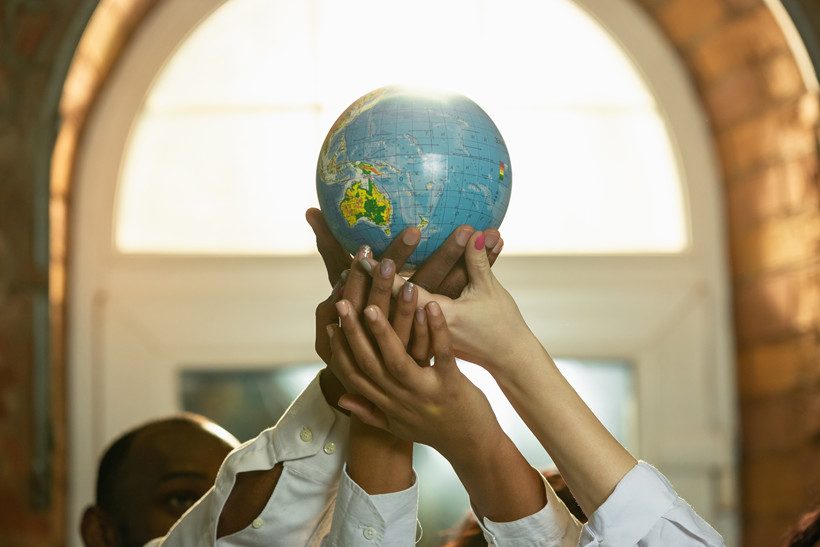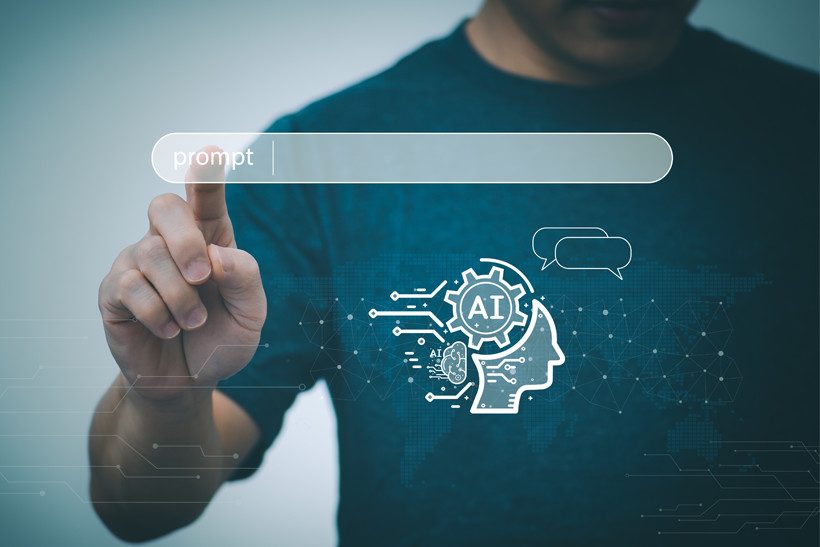
As globalization marches forward, interacting with people from different cultures has become far more commonplace than it was 50 years ago. Translation and interpreting are what make these interactions possible. The language industry has evolved to accommodate the increased demand for multilingual communication, with new technologies emerging every year.
One of the most prominent of these technologies is machine translation. This technology, which started as a cold-war effort to monitor Russian communications, has evolved into a variety of sophisticated virtual tools powered by artificial intelligence. However, these machines are far from competing with skilled human translators. This article explores how automation has impacted the translation industry and why human translation is still relevant today.
The Translation Process Before Machines
Translation is about converting written words from one language into another. Translators must be fluent in both languages to understand and relay the text’s original meaning. They generally start their work with an analysis of the source text, then break it into sections or paragraphs, translating it line-for-line.
Finally, the translator compares the original and translated documents to verify that meaning and nuance remain intact during translation. At this stage, an editor or proofreader may check the work for errors before sending it to the client. Translation agencies often hire project managers and administrative staff to assist linguists and coordinate translation projects.
Humans were once in charge of every step of the process. Today, however, Artificial Intelligence (AI) can handle many tasks behind the scenes. Translators also often use Machine Translation (MT) tools to enhance their core work.
Machine Translation Enters the Industry
Most machine translations today use NLP (Natural Language Processing). This algorithm teaches the machine about human language patterns to generate translations for words and phrases. This technology facilitates basic communication that transcends language barriers without hiring a professional translator. However, it is typically not advanced enough to handle more complex, multi-faceted or highly technical communication.
The first iteration of machine translation appeared in the 1950s. These rudimentary technologies were rule-based, meaning they could only translate the specific words and phrases they learned during programming. In contrast, today’s MT software can understand context, syntax, and other linguistic intricacies for better translations.
However, machine translation does have its limitations. It’s essentially still in a growth phase, with new developments changing methods every day. Many business owners hesitate to use MT as their primary translation method, especially for high-visibility work. Enterprises that enlist professional translation services from experienced translators still get a much better product.

Human Translation versus Machine Translation
Machine translation software uses algorithms that mimic the human brain, allowing it to comprehend language structure and meaning. Conversely, human translation is more intuitive and complex to replicate since it relies on the translator’s knowledge and experiences. Here are the biggest factors that set the two translation methods apart:
- Cost – in the short term, machine translation is cheaper than hiring a professional translator. However, the higher initial fee of hiring a professional translator can easily offset the expenses of inaccurate translations, edits, and revisions that come with MT, as well as the far-reaching adverse effects of publishing a poor-quality translation.
- Speed – because machines work faster than humans, MT usually offers faster turnaround times for most translation projects. Artificial intelligence can even provide real-time or instant translations in some systems. In fact, most human translators now use MT or AI in some form to speed up their translation process. The result is that these advances in technology have made translations, in general, faster across the industry.
- Accuracy – machine translation will not be satisfactory when translating complex content containing many industry-specific terms. In these cases, a human translator must ensure that the translation is accurate.
The type of content and the languages you work with will also significantly affect translation cost, speed, and accuracy. Usually, human translation offers many benefits beyond better phrasing.
The Hidden Role of the Human Translator
A translator’s primary goal is to facilitate communication in written media. However, their job does not begin and end with translating sentences. Unlike machines, human translators inject a personal touch into their work to help readers understand more abstract elements like register and style. Human translators can also fully understand the content and all its technical and cultural contexts, a cognitive process that machines cannot precisely replicate; therefore, human translators tend to be far more accurate.
1. Understanding Context
Who wrote the document, when it was published, and why is it called writing context? Awareness of these elements during translation is a subconscious skill human linguists have. Contextual understanding makes for better translations that resonate well with the final reader. It means knowing your audience and choosing words and phrases they will understand.
Context in translation extends to the subject matter. For example, writing about coding in robotics vastly differs from writing about coding in medical informatics. Humans can understand context much faster and more intuitively than machines, which typically require extra prompting to gain the proper context.
2. Emotional Intelligence
Human translators are emotional beings who can decipher and relay the emotional undertones in an author’s writing. They can mirror the feelings they get from the text in their translations for more sensitive and meaningful work. It may be challenging to get the same results with machine translation. For example, it is extremely unlikely for a machine translation engine to accurately translate a poem. However, a skilled and thoughtful human linguist can convey the deeper meaning and tone of that poem, and craft a unique translated work that mirrors the emotional message of the original – a much more context-heavy process than translating the piece word-for-word.
Human translators also need emotional intelligence to add politeness or formality to languages that emphasize etiquette. Being culturally sensitive can make a translation more credible and easier to receive. While some AI programs have simulated empathy and sentiment programming, they are far from competing with genuine human emotions.
3. Creativity
Creativity is as natural as breathing, and humans use this ability in almost everything. Even seemingly straightforward or rigid documents take some creativity to write, which human linguists can perceive and utilize when translating such pieces into other languages. When it comes to publishing literature or songs, human translation is ideal.
Translating idioms, metaphors, and cultural references can be challenging for machines, which may only have a limited understanding of these linguistic devices. On the other hand, experienced human translators can easily swap out an expression from one language for a similar one in another, helping to retain the author’s intended meaning. Humans consistently outshine machines when it comes to wordplay, sarcasm, and humor.
4. Project Coordination
Translating something into multiple languages or working in unusual pairings makes the translation process more complex. While machines might be able to manage projects and meet deadlines more efficiently than people, they are not adept at “thinking on their feet.” Creating contingency plans for delays and keeping projects running smoothly when facing challenges comes naturally to humans.
Human project managers can also communicate more efficiently. They are much more capable of communicating a client’s specific needs to a team of linguists and ensuring that those guidelines are followed. Using a machine translation engine removes the human element of collaborating with other people, which makes for a much more cohesive and personalized process.

Human Translation Upholds Industry Ethics
Ethics in translation means translating the text accurately and clearly without adding subjective opinions or changing the writing voice. Many people believe that machines offer the ultimate objectivity. However, this is not always true. Machine translation algorithms use training data to learn about language and build a library of linguistic patterns. Sometimes, machines can be biased when trained on homogenous inputs.
That is another reason why many high-profile enterprises prefer to hire human translators. Professional translation services provide accountability for errors and accuracy, giving publishers and their clients peace of mind. Translation agencies also guarantee confidentiality, which is not easy to verify when running sensitive documents through a machine translation engine.
Industries Where Human Translation Thrives
Industries where erroneous communication can risk lives or livelihoods typically choose traditional translation methods over AI-led innovations. Many businesses in these sectors contract directly with translation agencies or individual linguists that guarantee high-quality work.
- Legal translations – court documents, insurance policies, wills, immigration papers, and the like need precise translation to retain their actual meaning. Human translators with legal backgrounds can translate intricate legal clauses and select the appropriate industry terminology.
- Medical translations – human translation guarantees accuracy and privacy regarding patient records and prescriptions. Experienced linguists also prove valuable in translating clinical research papers, drug package inserts, and other documents that include nuanced medical terms.
- Technical translations – the science and engineering fields need linguists with industry-specific knowledge to translate patents, manuals, and logistics reports. These documents are densely populated with technical terminology that may be beyond the scope of machine translation.
- Entertainment media translations – Human translators come out head and shoulders above machines concerning books, films, and video games. Humans have a deeper understanding of current affairs, pop culture, and natural emotions, allowing them to create more engaging content that appeals to multicultural audiences.

New Responsibilities for Human Translators in the Age of AI
The increasing popularity of machine translation has led many linguists to question whether AI will ever replace human translators. The short answer is: not for a long time. Like many industries before it, linguistics is going through a season of change. AI has merely streamlined the translation process to help humans work faster and smarter without compromising work quality.
Nonetheless, no matter how advanced machine translation becomes, humans still need to train and manage it. New roles that allow linguists to develop technical skills to advance the industry as a whole may soon emerge. For now, human translators can use machines to streamline simple, repetitive tasks so they have more time to tackle creative challenges.
Finding Professional Translation Services
Human translators fill a need that machines have not yet been able to satisfy. The emotional and creative centers of the human mind allow linguists to make culturally aware, sensitive translations, particularly in fields that require specialized knowledge. The best translators are native speakers who understand the field of study where the translation documents originate.
Prismatic Translation® has over 30 years of industry experience and offers professional document translation in 36 languages. We work directly with skilled individual linguists, vetting each translator, editor, and proofreader to ensure exceptional quality every time. For more information about our services, request a quote below and we will get back to you within minutes.